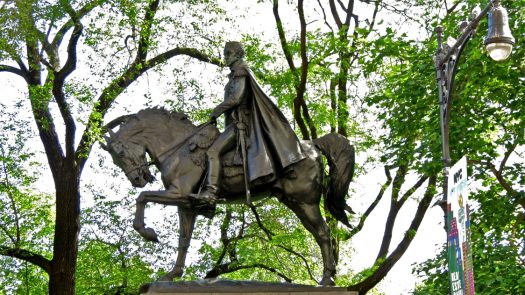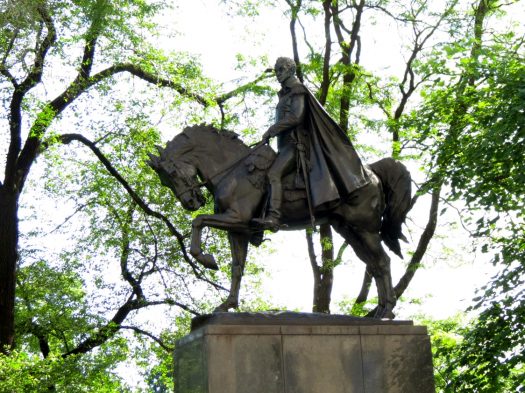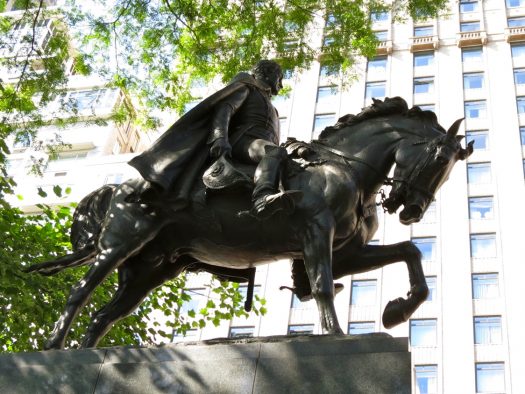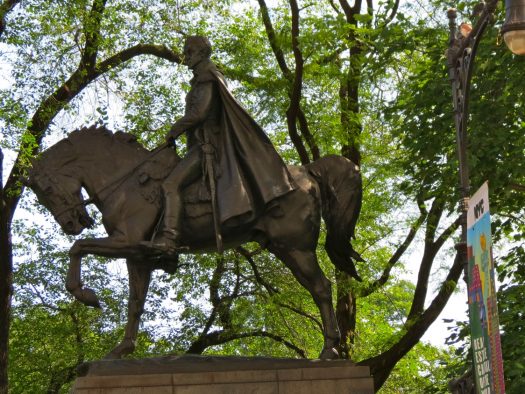- CountryUS
- Town:NY New York City
-
Year of creation:1921
- Rider(s):Bolivar, Simon
(1783 –1830) played a key role in liberating Venezuela, Colombia, Ecuador, Peru (together with José de San Martín), and Boliviafrom Spanish rule.
Born in Venezuela, Bolivar got a great deal of his education in France and Spain. He returned to Venezuela and got a military command in New Granada (nowadays Colombia) in 1813. In 1819 he successfully finalized a campaign for the independence of New Granada and launched from this stronghold independence campaigns in Venezuela and Ecuador, which he concluded with victories in 1821 and 1822. He became President of the new state Gran Colombia, which covered much of nowadays Colombia, Panama, Venezuela, Ecuador, northern Peru and the northwest of Brazil. In 1822 he took over the task of José de San Martin of fully liberating Peru.
Assisted by Antonio José de Sucre, Bolívar defeated the Spanish forces in 1824, resulting in the creation of the Republic of Bolivia, a country named after its liberator. Bolívar had great difficulties maintaining control of the vast Gran Colombia. After failing to write a new constitution, he proclaimed himself dictator in 1828, meant as a temporary measure to reestablish his authority and to save the republic. He survived an assassination attempt in 1828. Two years of uprisings followed. Bolivar resigned his presidency in 1830 and died in the same year, before he could go into exile in France as he intended.
Bolivar was an admirer of George Washington. They shared the same objective: independence for their people and the establishment of a democratic state. They differed, however, on two important matters. Bolivar was anti-slavery, despite coming from an area that relied heavily on slave labor, and he did not believe that the US system could function in Latin America, claiming that the governance of heterogeneous societies like Gran Colombia “will require an infinitely firm hand”.
- Sculptor(s):Farnham, Sally James
(1869 – 1943) was an American sculptress.
-
The first statue of Bolivar, placed in New York City in 1891, was removed because critics believed it did not live up to the original artistic vision. In 1916, the Venezuelan government sponsored a worldwide competition to select a sculptor to render Bolívar. Out of the 20 entrants, the committee selected Sally James Farnham, a relatively unknown artist. Farnham’s statue depicts Bolívar in full military dress upon his steed. At the time it was both the largest monument sculpted by a woman and the only equestrian monument of a man created by a female artist. It took five years to complete and earned her the Order of Bolivar (the greatest civilian honor given by the Venezuelan government).












